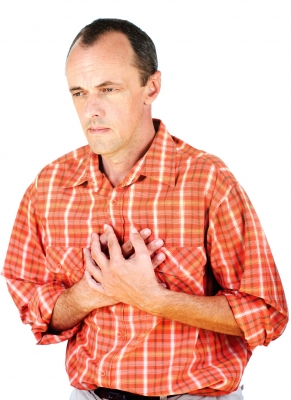Heart Attack vs. Panic Attack: When to seek medical attention

Heart disease impacts your heart muscle, blood vessels, and electrical system. Coronary artery disease is the most common form of heart disease. Coronary artery disease involves the build-up of plaque deposits on artery walls. This plaque build-up is called atherosclerosis. When this plaque ruptures it cause a blood clot to suddenly block an artery. If this happens within the heart, it causes a heart attack. When this occurs, it’s imperative you receive life-saving treatment within the first 30-minutes to prevent permanent damage and death.
Symptoms
Chest pain and breathing difficult are common symptoms for both a panic attack and a heart attack. Additional symptoms for both can include palpitations, dizziness, feelings of impending doom, burning sensation in the chest, numbness of hands and feet, unusual fatigue, fainting, and sweating. Panic attacks occur spontaneously, maybe triggered by a stressful event. Chest pains, as a part of anxiety, are not normally considered to be dangerous. However, chest pain and breathing difficulty can also be signs of a lack of blood flow to the heart muscle.
How do you differentiate?
Heart Attack:
- Increasing chest pain reaching max severity in a few minutes
- Constant pressure, pain, aching
- Left chest pain
- Pain that radiates from the chest to other locations
- Pain connected to movement or exertion
Panic Attack:
- Stabbing/sharp chest pain
- Fleeting chest pain
- Pain localized to one area
- Pain not triggered by movement/exertion
- Pain level changes (increases or decreases) with change in position
- Accompanied by anxiety
- Can be reproduced by pressing over the area in pain
When to Seek Medical Attention
Oftentimes, heart attacks begin suddenly and require immediate medical attention. Some heart attacks, however, begin much slower, with pressure and pain building up, leaving someone wondering if they are having a heart attack or if something else may be happening.
According to the American Heart Association, the following are warning signs of a heart attack and all signal a reason to seek immediate medical attention:
- Chest discomfort: Most heart attacks involve discomfort in the center of the chest that lasts more than a few minutes, or that goes away and comes back. It can feel like uncomfortable pressure, squeezing, fullness or pain
- Discomfort in other areas of the upper body: Symptoms can include pain or discomfort in on or both arms, the back, neck, jaw or stomach.
- Shortness of breath with or without chest discomfort.
- Other signs may include breaking out in a cold sweat, nausea or lightheadedness.
For any of these signs, call 911 to receive immediate medical care. The sooner a heart attack is treated, the better chance of a full recovery.
Heart disease in women can often be mistaken for a panic attack including anxiety, shortness of breath, indigestion, and palpitations. Tests that go beyond a standard EKG are needed for a correct diagnosis. If you question your symptoms, seek care immediately to rule out heart disease.
For guidance on steps you can take to lower blood pressure, access the free e-course 7 Natural Ways to Lower Blood Pressure at http://lowerbloodpressurewithlisa.com.
All the best,
Lisa Nelson RD
Health Pro for HealthCentral
References:
Heart Attack, Stroke and Cardiac Arrest Warning Signs, 2008, American Heart Association
Katerndahl MD MA, David. “Panic & Plaques: Panic disorder & coronary artery disease in patients with chest pain.” The Journal of the American Board of Family Practice 2004 17:114-126.
Image courtesy of marin / FreeDigitalPhotos.net



